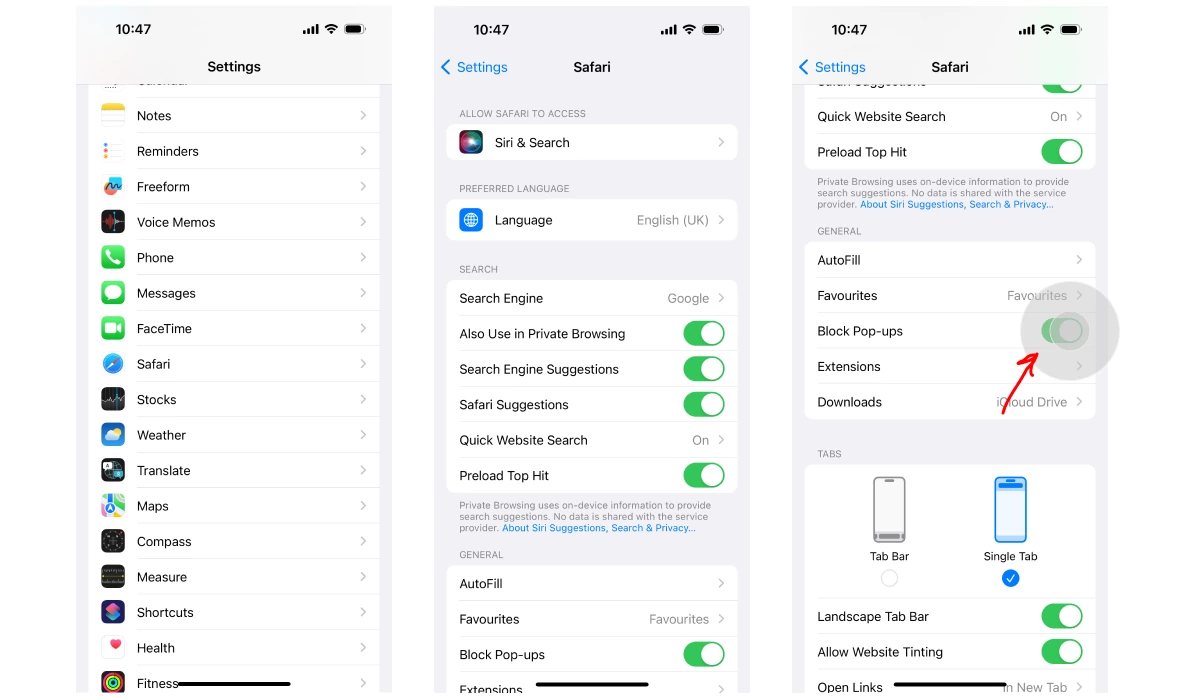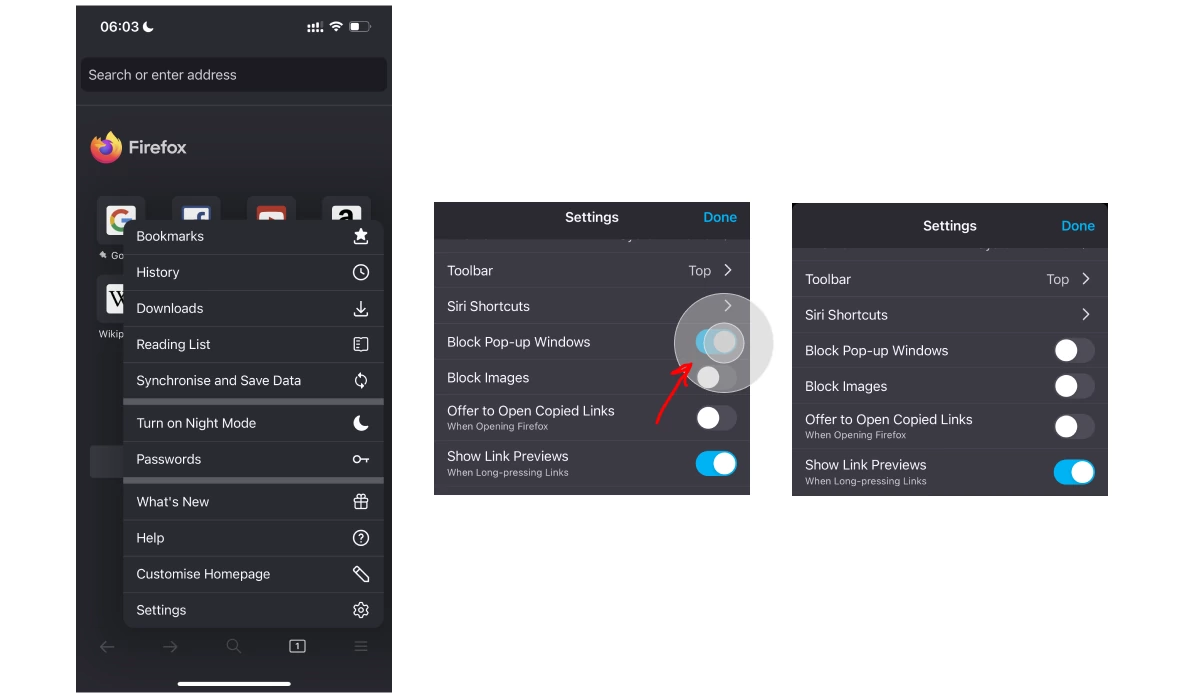How to Allow Pop-Ups: The Ultimate Guide
Ad blockers, including AdLock, are often unfairly blamed for websites malfunctioning. However, in the given context, pop-ups are not necessarily advertisements but rather essential website elements such as chat dialogs, sign-in forms, or discount offers. These are typically JavaScript elements that AdLock does not interfere with. Therefore, if you cannot find an option that a website encourages you to use, it’s likely that your browser has blocked it.
To be fair, it shouldn’t be your responsibility to ensure that someone else’s website works properly. However, sometimes you have no other option but to comply and allow pop-ups on a particular website. From our perspective, we encourage you not to disable AdLock or any other ad blocker, especially if a website fails to operate correctly. Ironically, your browser might block a harmless operational pop-up but allow a malware one to slip through. An ad blocker will protect you from such threats.
Contents
How to Allow Pop-Ups on Google Chrome
By default, the Google Chrome browser blocks pop-ups. When Chrome prevents a pop-up window, it displays “Pop-up blocked” in the address bar. To unblock pop-ups on Chrome, you need to adjust the browser settings.
Allow Pop-Ups on Google Chrome on PC
Here’s how to allow pop-ups on the computer Chrome browser:
- Open Chrome and click on the three vertically aligned dots in the upper right corner, then select Settings.
- Scroll down and select Advanced at the bottom.
- In the left panel, choose Privacy and Security, then click on “Site settings” in the main window.
- Select Pop-ups and redirects in the Contents section.
- Toggle the switch from Blocked (recommended) to Allowed.
Allow Pop-Ups on Google Chrome on Android
Pop-ups aren’t just a desktop issue; you can allow pop-ups on your Android phone or tablet too. Here’s how to do it:
- Open Chrome on your device.
- Tap the three dots in the top-right corner, then select Settings.
- Scroll down and choose Site Settings.
- Tap Pop-ups and redirects.
- Toggle the slider to allow or block pop-ups in Chrome on Android.
Allow Pop-Ups on Google Chrome on iPhone & iPad
To allow pop-ups in Chrome on iOS, you need to undergo a similar process as for Android:
- Open the Chrome Browser on your device.
- Tap the three dots in the bottom-right corner and select Settings.
- Scroll down, choose Content Settings, and select Block pop-ups.

- Toggle the slider to allow or block pop-ups in Chrome on iOS.

How to Allow Pop-Ups in Safari
Safari’s got your back with its built-in pop-up blocker, keeping those annoying pop-up windows at bay while you surf the web on your Mac or iPhone/iPad. However, you can deactivate it in no time when necessary.
Allow Pop-Ups in Safari on Mac
- Open Safari Preferences: Launch Safari on your Mac and click on Safari in the menu bar. From the drop-down menu, select Preferences or Settings.
- Navigate to Websites Preferences: In the Preferences window, click on the Websites tab at the top.
- Select Pop-up Windows: On the left sidebar, find and click on Pop-up Windows.
- Allow Pop-ups: In the main window, you’ll see options to allow or block pop-ups for specific websites. To allow pop-ups universally, choose the Block and Notify option from the drop-down menu.
Allow Pop-Ups in Safari on iPhone & iPad
- To allow pop-ups on iPad and iPhone, go to Settings.
- Find Safari Settings: Scroll down and tap on Safari to access its settings.
- Toggle Block Pop-ups: In the Safari settings, scroll down and find the option labeled Block Pop-ups. Toggle the switch to turn it off, allowing pop-ups in Safari on your iOS device.

How to Allow Pop-Ups in Firefox
Firefox has its own pop-up blocker to keep your browsing smooth and safe. It stops annoying pop-ups from messing with your web experience and helps keep your device secure. You can turn it off in no time when needed. Here’s how to allow pop ups in Firefox on different platforms:
Allow Pop-Ups in Firefox on PC
- Click on Firefox in the Menu bar at the top of the screen, then select Preferences.
- Navigate to the Privacy & Security panel.
- Scroll down to the Permissions section.
- Uncheck the box next to Block pop-up windows to disable the pop-up blocker entirely.
- Click on the Exceptions button located next to Block pop-up windows to open a dialog box where you can choose which sites are allowed to display pop-ups.
- In the dialog box, you have several options:
- Type or paste the address of a website and click Allow to add it to the list of sites allowed to open pop-up windows.
- Select a website from the list and click Remove Website to remove it from the exceptions list.
- Click Remove All Websites to remove all websites from the exceptions list.
- Finally, click Save Changes to apply the changes and allow pop-ups in Firefox.
Allow Pop-Ups in Firefox on iPhone & iPad
- To allow pop-ups on iPhone and iPad, Open Firefox on your device and tap on the menu icon (three horizontal lines) at the bottom-right corner.
- Tap on Settings from the menu.
- Find and then toggle off the switch next to Block Pop-up Windows to enable pop-ups.

Allow Pop-Ups in Firefox on Firefox Focus
Firefox Focus is a new mobile browser for iOS and Android that positions itself as ultra-secure. Its main feature is tracking protection, and it does not have a separate option to disable or enable pop-up windows.
How to Allow Pop-Ups on Microsoft Edge
The pop-up blocker feature in Microsoft Edge effectively prevents websites from opening new windows or tabs without your permission. Here’s how to manage it:
- Open Edge and click on Settings and more at the top of your browser.
- Select Settings > Cookies and site permissions.
- Under All permissions, choose Pop-ups and redirects.
- Turn off the Block (recommended) toggle.
If you need to allow pop-ups for a website, follow these additional steps:
- In the Pop-ups and redirects settings, locate the Allow section and click Add.
- Enter the URL of the website you want to allow pop-ups for in the dialog box (starting with “https://”) and click Add. The URL will now be added to your Allow list.
How to Allow Pop-Ups on Opera
There are various ways to manage pop-ups in the Opera browser. In fact, we have an entire article dedicated to ads and pop-ups on Opera, so don’t hesitate to check it out.
Why Allow Pop-Ups?
As mentioned at the beginning of the article, pop-ups can be an essential part of website functionality. While they certainly shouldn’t be, it happens anyway. Here is a list of reasons you might need to enable pop-ups on some or all websites:
- Getting important updates: Some websites use pop-ups to share important notifications or messages that you shouldn’t miss. Turning on pop-ups helps you stay informed.
- Smooth shopping: Pop-ups are often used on shopping websites for things like checkout or confirming orders. Keeping pop-ups on makes your shopping experience hassle-free.
- Sharing your thoughts: Websites sometimes use pop-ups for surveys or feedback forms. Enabling pop-ups lets you have your say and share your feedback.
- Using web apps: Certain online tools or services might need pop-ups to work smoothly. By allowing pop-ups, you ensure you can use these apps without any issues.
- Connecting with other services: Some websites link up with other platforms that use pop-ups for things like logging in or accessing features. You may need to unblock a pop-up window to interact seamlessly with these connected services.
You might have a legitimate concern that enabling pop-ups ensures a free pass for scams and malware. And while you’re not wrong, the “block pop-ups” option is not a cure-all for bad actors. However secure browsers are getting, their main mission is to navigate you around the web, not to serve as a shield. With or without enabling pop-up blockers, you need an actual ad blocker whose main purpose is to counter attacks and threats. This is where AdLock comes in.
AdLock safeguards your phone, tablet, or PC by preventing intrusive and potentially harmful ads and protecting you from malicious software. It’s not a regular ad blocker; it covers ads across browsers, apps, and games, serving as your all-in-one defense against commercials, adware, phishing scams, and online threats. With AdLock, you control your online experience, deciding which sites are allowed or blocked and stopping websites from tracking you. All this protection comes at an affordable cost of $12 per year or $3.49 per month, covering up to five devices. You can get AdLock for Android, iPhone or iPad, PC, and Mac. And be sure to install our forever-free AdLock extensions for Chome and Safari, which will stop any danger even when you enable pop-ups in the browser settings.